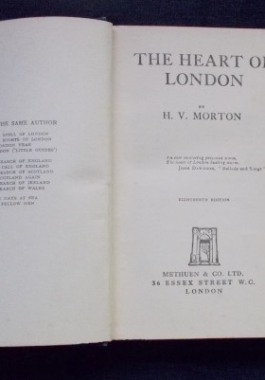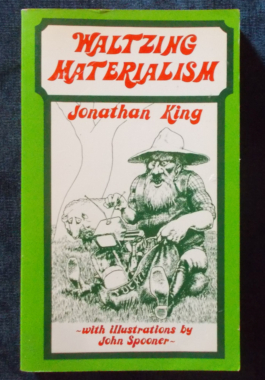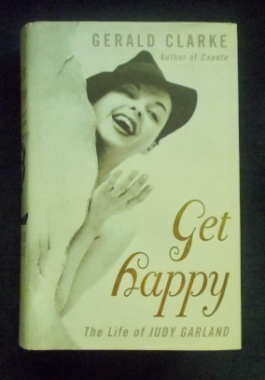-

 A collection of some of H.V. Morton's columns for the Daily Express, which is still in print today almost 100 years later. Morton never did the tourist route; instead he went off the beaten track to look into what really made a city. What he found was London's wonderful diversity of people against intriguing backgrounds. Among other places, he visits the docks, the Caledonian Market, Petticoat Lane, the Free Cancer Hospital, observes the nannies and their charges in Kensington Gardens, tea-shops, St. Martin's-in-the-Fields, the Lost Property Office and many other places.
A collection of some of H.V. Morton's columns for the Daily Express, which is still in print today almost 100 years later. Morton never did the tourist route; instead he went off the beaten track to look into what really made a city. What he found was London's wonderful diversity of people against intriguing backgrounds. Among other places, he visits the docks, the Caledonian Market, Petticoat Lane, the Free Cancer Hospital, observes the nannies and their charges in Kensington Gardens, tea-shops, St. Martin's-in-the-Fields, the Lost Property Office and many other places. -

Here are tales of a real country practice - in Scone, New South Wales. They are unique: a mix of humor, medicine and of course, the most necessary factor - patients. There's a generous dash of local history, too and an interesting tracking of the medical and social changes over 50 years in the town where he began his medical life. Illustrated with black and white photographs. Poidevin's sixth book.
-
 At one time Corrie ten Boom (1892 - 1983) would have laughed at the idea that there would ever be a story to tell. For the first fifty years of her life nothing at all out of the ordinary had ever happened to her. She was an old-maid watchmaker living contentedly with her spinster sister and their elderly father in the tiny Dutch house over their shop. Their uneventful days, as regulated as their own watches, revolved around their abiding love for one another. However, with the Nazi invasion and occupation of Holland, a story did ensue. As they watched the lights of freedom go out all over Europe, they were motivated by love to become leaders in the Dutch Underground, hiding Jewish people in their home in a specially built room and aiding their escape from the Nazis. They were caught - and Corrie was the only one who survived the horrors of Ravensbrück. Illustrated with black and white photographs.
At one time Corrie ten Boom (1892 - 1983) would have laughed at the idea that there would ever be a story to tell. For the first fifty years of her life nothing at all out of the ordinary had ever happened to her. She was an old-maid watchmaker living contentedly with her spinster sister and their elderly father in the tiny Dutch house over their shop. Their uneventful days, as regulated as their own watches, revolved around their abiding love for one another. However, with the Nazi invasion and occupation of Holland, a story did ensue. As they watched the lights of freedom go out all over Europe, they were motivated by love to become leaders in the Dutch Underground, hiding Jewish people in their home in a specially built room and aiding their escape from the Nazis. They were caught - and Corrie was the only one who survived the horrors of Ravensbrück. Illustrated with black and white photographs. -
 Porridge is regarded by many critics as Britain’s best sitcom. Ronnie Barker and Richard Beckinsale were perfectly cast as the experienced lag and the naive first time offender and their developing relationship had viewers gripped until the doors of Salde Prison closed its doors for the final time in 1977. This is the real story behind the much-loved series. Illustrated with archival photographs, this ultimate companion reveals all and includes profiles and interviews with the actors, directors and other members of the production team. All 21 episodes are detailed in full and Going Straight, the sequel to Porridge, is also extensively covered.
Porridge is regarded by many critics as Britain’s best sitcom. Ronnie Barker and Richard Beckinsale were perfectly cast as the experienced lag and the naive first time offender and their developing relationship had viewers gripped until the doors of Salde Prison closed its doors for the final time in 1977. This is the real story behind the much-loved series. Illustrated with archival photographs, this ultimate companion reveals all and includes profiles and interviews with the actors, directors and other members of the production team. All 21 episodes are detailed in full and Going Straight, the sequel to Porridge, is also extensively covered. -
 Published in 1978, this is the book that tells Australians who they really are via the controversial perception by the author of Australian apathy, greed and intolerance while scrambling for a fast buck and endless possessions - not to mention being lazy and overweight as well. And delusional. King - a descendant of Philip Gidley King, Governor of N.S.W. 1800 - 1806 - explodes the myths of the hard-working outback heroes to replace them with I'm all right Jack...I'm getting rich quick...I'm getting my share of...on the grounds that the spirit of materialism has waltzed through Australian history for too long. Illustrated by John Spooner.
Published in 1978, this is the book that tells Australians who they really are via the controversial perception by the author of Australian apathy, greed and intolerance while scrambling for a fast buck and endless possessions - not to mention being lazy and overweight as well. And delusional. King - a descendant of Philip Gidley King, Governor of N.S.W. 1800 - 1806 - explodes the myths of the hard-working outback heroes to replace them with I'm all right Jack...I'm getting rich quick...I'm getting my share of...on the grounds that the spirit of materialism has waltzed through Australian history for too long. Illustrated by John Spooner. -
 Like a tramp, a pilgrim or a wandering scholar, an 18 year-old boy set out one wet December day in 1933 to walk to Constantinople. In that year, when Hitler came to power, adventure beckoned and youth was golden for Patrick Leigh Fermor as he tramped up the Rhine and down the Danube towards the mysterious gateway to the East - sleeping barns, or in fairy tale castles, losing his possessions and being showered with gifts. But there was more to discover than freedom and the camaraderie of the road: the arts, landscapes, religions, languages, histories and above all, the people of a dozen civilisations unfolded before his hungry young mind - sharply outlined before the gathering storm. This volume covers his journey from the Hook of Holland to the Middle Danube.
Like a tramp, a pilgrim or a wandering scholar, an 18 year-old boy set out one wet December day in 1933 to walk to Constantinople. In that year, when Hitler came to power, adventure beckoned and youth was golden for Patrick Leigh Fermor as he tramped up the Rhine and down the Danube towards the mysterious gateway to the East - sleeping barns, or in fairy tale castles, losing his possessions and being showered with gifts. But there was more to discover than freedom and the camaraderie of the road: the arts, landscapes, religions, languages, histories and above all, the people of a dozen civilisations unfolded before his hungry young mind - sharply outlined before the gathering storm. This volume covers his journey from the Hook of Holland to the Middle Danube. -
 The girl with the pigtails, the symbol of innocence in The Wizard Of Oz; the brightest star of the Hollywood musical and an entertainer of almost magical power; the woman of half a dozen comebacks, a hundred heartbreaks and thousands of headlines. A remarkable list of sources have been drawn on, including the unopened papers discovered in a Tennessee courthouse and the unpublished memoir of Judy's make-up girl and closest confidante as well as Judy's unfinished autobiography. Unforgettable characters are brought to life: Oscar Levant; Orson Welles; Rita Hayworth; Vincente Minelli and the smooth, seductive David Begelmnan, who stole Judy's heart so he could steal her money. Judy described her unfinished autobiography as, '...one hell of a great, everlastingly great book, with humour, tears, fun, emotion and love.' She might just as well have been describing Get Happy. Illustrated with black and white photographs.
The girl with the pigtails, the symbol of innocence in The Wizard Of Oz; the brightest star of the Hollywood musical and an entertainer of almost magical power; the woman of half a dozen comebacks, a hundred heartbreaks and thousands of headlines. A remarkable list of sources have been drawn on, including the unopened papers discovered in a Tennessee courthouse and the unpublished memoir of Judy's make-up girl and closest confidante as well as Judy's unfinished autobiography. Unforgettable characters are brought to life: Oscar Levant; Orson Welles; Rita Hayworth; Vincente Minelli and the smooth, seductive David Begelmnan, who stole Judy's heart so he could steal her money. Judy described her unfinished autobiography as, '...one hell of a great, everlastingly great book, with humour, tears, fun, emotion and love.' She might just as well have been describing Get Happy. Illustrated with black and white photographs. -

Sand, Sweat And Camels: The Australian Companies Of The Imperial Camel Corps (I.C.C.) were formed in January 1916 in order to deal with the revolt of pro-Turkish Senussi tribesmen in Egypt’s Western Desert. The first four companies were recruited from Australian infantry battalions recuperating after Gallipoli. Four battalions were eventually formed: the 1st and 3rd were entirely Australian, the 2nd was British, and the 4th was a mix of Australians and New Zealanders. The I.C.C. also had its own machine gun unit, and a battery of light artillery recruited in Hong Kong and Singapore. Operations were characterised by long patrols and brief skirmishes in the deserts of North Africa and the Middle East. The men of the ICC had a rough reputation, as Australian battalion commanders had seized upon it as an opportunity to offload some of their more difficult characters. In 1917 a British supply dump at Rafa was warned to double their guards as the ICC was going to be camped nearby. The men of the I.C.C. were, however, resourceful and effective. While defending a hill called Musallabeh in April 1918, the men of the I.C.C. ran out of hand grenades. They resorted to heaving boulders down upon the attacking Turks and eventually fought them off. The hill became known as the “Camel’s Hump”. The author, George Langley was the commanding officer of the 1st (Australian Battalion), Imperial Camel Corps. Australian Aviator: In April, 1915, after undertaking a 5-year apprenticeship as a mechanic, Brearly worked his way to the United Kingdom and enlisted in the Royal Flying Corps. Whilst flying in France during World War I he was badly wounded when he was shot down over the Western Front in October, 1916. He came to found, in 1921, Western Australian Airways Ltd - Australia's first commercial airline. In the same year, he was issued with Australia's first civil pilot's licence, under the 1921 Air Navigation Regulations. Despite his holding licence No. 2, licence No. 1 was not issued until the 1930s in honour of Amy Johnson's record flight from London to Australia. In 1927, Brearley opened the Perth Flying School. He retired from commercial aviation in 1936 when he merged his airline with Australian National Airways and later served with the R.A.A.F. during World War II. Brearley was knighted in 1971. He died on 9 June 1989 - but has left us this well told story, as well as his contributions to aviation in war and peace. Illustrated with black and white photographs.
-
 In the split second that it took Associated Press photographer Joe Rosenthal to snap the shutter of his Speed Graphic, a powerful and enduring American symbol was born. Iwo Jima: Monuments, Memories and the American Hero tells the story of that icon as it appeared over the next 40 years in bond drive posters, stamps, Hollywood movies, political cartoons, and sculpture, most notably the colossal Marine Corps War Memorial outside Washington, D.C. It is also a brilliant and moving study of the soldiers who fought one of the bloodiest battles in modern warfare and the impact that Iwo Jima had on the rest of their lives. The battle of Iwo Jima raged for many days and ultimately claimed the lives of almost 7000 American serviceman, yet that famous photo - a grainy outline of massed men and their flag - already symbolised victory.
In the split second that it took Associated Press photographer Joe Rosenthal to snap the shutter of his Speed Graphic, a powerful and enduring American symbol was born. Iwo Jima: Monuments, Memories and the American Hero tells the story of that icon as it appeared over the next 40 years in bond drive posters, stamps, Hollywood movies, political cartoons, and sculpture, most notably the colossal Marine Corps War Memorial outside Washington, D.C. It is also a brilliant and moving study of the soldiers who fought one of the bloodiest battles in modern warfare and the impact that Iwo Jima had on the rest of their lives. The battle of Iwo Jima raged for many days and ultimately claimed the lives of almost 7000 American serviceman, yet that famous photo - a grainy outline of massed men and their flag - already symbolised victory.


